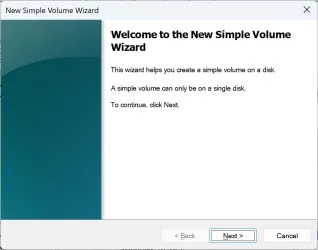- Local time
- 11:51 PM
- Posts
- 64
- OS
- Windows 11 Pro
Hi
Not sure where to post this question. Mods please move if this isnt the right place.
I recently purchased a 0.5Tb USB d rive. Its really fast and I love it....but at the moment it is comically formatted at a 32Gb FAT 32 Windows install drive (having recently been used for putting W11 on my new PC).
This seems a waste.
Is there some 'computery magic' which can be cast on this USB such that:
Part of it can be a Windows 11 boot/installation drive
Part of it can be my Macrium X recovery disk
Part of it can be a normal SSD storage pool for file transfer when needed
?
Thanks
Methy
Not sure where to post this question. Mods please move if this isnt the right place.
I recently purchased a 0.5Tb USB d rive. Its really fast and I love it....but at the moment it is comically formatted at a 32Gb FAT 32 Windows install drive (having recently been used for putting W11 on my new PC).
This seems a waste.
Is there some 'computery magic' which can be cast on this USB such that:
Part of it can be a Windows 11 boot/installation drive
Part of it can be my Macrium X recovery disk
Part of it can be a normal SSD storage pool for file transfer when needed
?
Thanks
Methy
Last edited:
My Computer
System One
-
- OS
- Windows 11 Pro
- Computer type
- PC/Desktop
- Manufacturer/Model
- Self Built
















